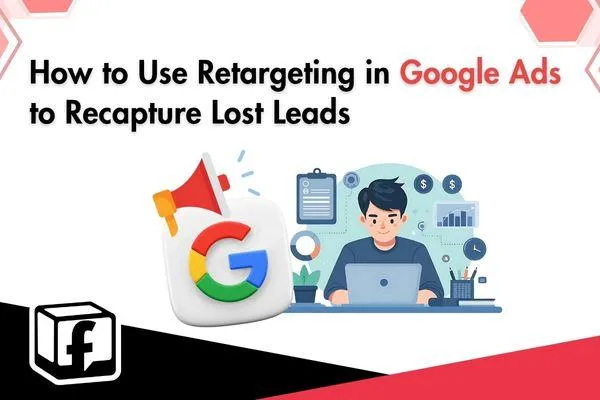
How to Use Retargeting in Google Ads to Recapture Lost Leads

Using Retargeting in Google Ads to Recapture Lost Leads
Not every potential customer converts the first time they visit your website. In fact, most don’t. That’s why retargeting in Google Ads is such a powerful strategy. By reconnecting with people who previously interacted with your site, you can recapture lost leads, boost conversions, and improve your overall campaign ROI.
This article explains how to implement a Google Ads remarketing strategy that turns missed opportunities into measurable results.
1. What Is Retargeting in Google Ads?
Retargeting in Google Ads, also called remarketing, allows you to show ads to users who’ve already visited your website, engaged with a landing page, or abandoned a cart.
Instead of letting those potential customers slip away, you can use Google Ads audience targeting to stay top of mind and guide them back to convert. Whether through display remarketing ads, text ads, or even dynamic product ads, retargeting campaigns are one of the most cost-effective ways to nurture leads.
2. Why Retargeting Works
There are many reasons why visitors don’t convert right away — they might be comparing competitors, not ready to decide, or simply distracted.
Here’s why remarketing campaigns work:
Keeps your brand visible as leads continue their decision-making process.
Reinforces trust by reminding them of their prior engagement.Encourages return visits and conversions at a lower cost-per-acquisition (CPA).
Studies show that retargeted users are more likely to convert than those reached through cold acquisition.
3. Setting Up a Retargeting Campaign
To launch your retargeting strategy, follow these steps:
a. Define Your Audience
All website visitors
Visitors to specific product or service pages
Cart abandoners
Past converters for upselling or cross-selling
b. Create Your Remarketing List - Use Google Ads or Google Analytics to build lists of people who meet your criteria. Make sure your lists meet the minimum audience size (often 100 users for Display, 1,000 for Search).
c. Choose Ad Formats
Display remarketing ads with visuals and offers.
Search remarketing (RLSA) to target users as they search again.
Dynamic retargeting in Google Ads to show personalized product ads.
d. Optimize Your Bidding
Since retargeted users are already familiar with you, you can afford to bid higher to secure conversions.
4. Best Practices for Retargeting
Here are some proven retargeting best practices:
Segment audiences to tailor messaging for each group.
Cap the frequency to avoid overwhelming leads.
Update creative regularly to prevent ad fatigue.
Use strong calls-to-action (e.g., “Get Your Free Consultation”).
Test offers to see what resonates best.
By following these tips, you can improve engagement and increase conversions with retargeting.
Conclusion:
If you’re not running retargeting in Google Ads, you’re leaving money on the table. A well-planned retargeting strategy helps you reconnect with website visitors, nurture prospects, and recapture lost leads efficiently.
By leveraging remarketing campaigns, optimizing your Google Ads audience targeting, and applying best practices, you can turn “maybe” into “yes” — improving your conversion optimization and delivering better ROI from your PPC spend.
How Ads with Finesse Can Help You
At Ads with Finesse, we specialize in crafting ad campaigns that highlight the best customer experiences, ensuring your audience connects with your brand on an emotional level. Our team carefully selects authentic, high-impact reviews and seamlessly integrates them into your ad strategy.
Learn more about our services today and turn your Google Ads into your most powerful marketing tool with Ads with Finesse.
Let’s create ads that resonate, convert, and build trust.
Check out our blog and services at adswithfinesse.com.